| Issue Date | 08.09.2017 |
| ID | Michel: Scott: Stanley Gibbons: Yvert: UPU: Category: pF |
| Designer | Designer: Cyril Maphumulo Artwork: Brett Elott |
| Stamps in set | 1 |
| Value | standard (domestic) postage |
| Size (width x height) | stamp: 35x35 mm, Mini Sheet: 65 x 105 mm |
| Layout | Mini Sheet |
| Products | FDC x1 |
| Paper | Tullis Russell yellow/green phosphor gum stamp paper, 103gsm |
| Perforation | |
| Print Technique | Offset Lithography, Four process
colours |
| Printed by | Southern Colour Security Print, New
Zealand
|
| Quantity | 150 000 |
| Issuing Authority | South African Post Office |
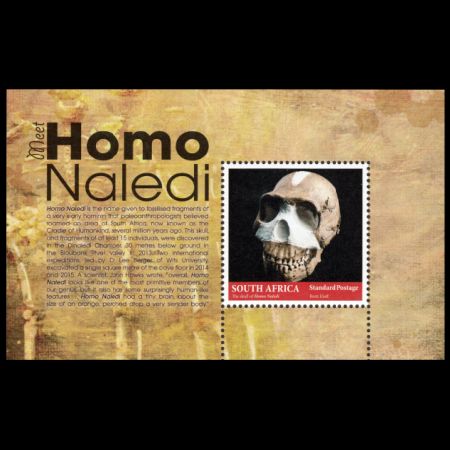
On September 8 2017, the South African Post Offce has issued a standard postage miniature sheet and FDC in honour of Homo naledi, designed by Cyril Maphumulo.
The story of Homo naledi started when two recreational cavers Steven Tucker and Rick Hunter entered a cave called Rising Star (Naledi Chamber), eager to find an unknown channel and perhaps discover some fossils in an area commonly known as the ‘Cradle of Mankind’. A multitude of fossils and earliest evidence of life on earth had been found in the area just west of Johannesburg in the middle of the 20th century leading to the belief that mankind originated in South Africa, a fact that East Africa also lay claim to.This belief encouraged adventurers to try their luck at discovering new fossils. Tucker and Hunter were taking photographs in a particularly narrow chamber when Tucker found himself in a vertical chute that was in some places less than eight inches wide. The sight of bones scattered around the cave intrigued them as it is uncommon to find fossils not solidified into stones, these were just lying around and looked human like.
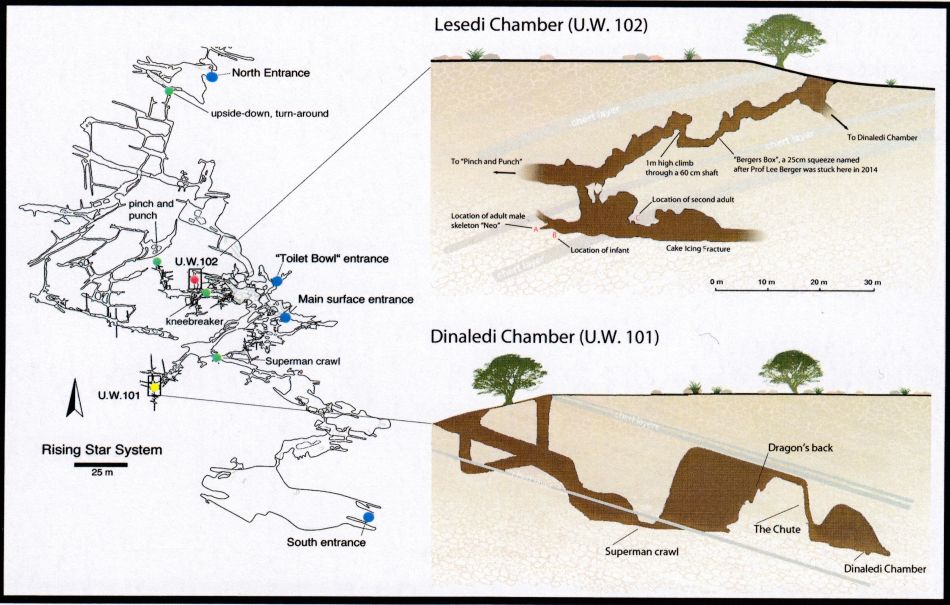
They took pictures and took them to Professor Lee Berger at the Wits University Department of Palaeoanthropology and the rest is history. He advertised on Facebook for very thin people who had to be scientifcally sound and have caving experience. Six young women were selected out of almost sixty applicants from all over the world. They went underground, gathered the fossils whilst filming and relaying images to Berger and his team that was above ground. The bones were superbly preserved, and by March 2014, 1550 specimens in all, representing at least 15 individuals had been excavated; these included even the small bones of the ear canal! Parts of the skeletons looked astonishingly modern though other parts were astonishingly primitive.
Physical characteristics of Homo naledi:
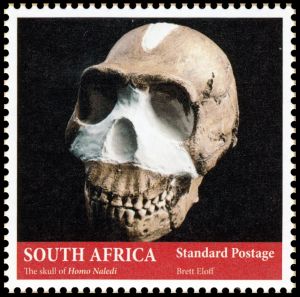 • Its braincase is less than half that of the modern human skull
• Its braincase is less than half that of the modern human skull• Its hand displays curved fingers, suggesting that it might have climbed trees and used rudimentary tools. The thumb, wrist, and palm bones all look remarkably modern.
• Its teeth range from humanlike molars to extremely primitive premolar roots.
• The shoulders are non humanlike.
• The pelvis is very primitive at the top but the bottom of the same pelvis looks like a modern human’s.
• The leg bones are shaped like an australopithecine’s at the top and more modern at the bottom with feet that are virtually indistinguishable from those of humans.
• The skull shows a mixture of the primitive and Homo sapiens.
• Berger and his team felt the species belonged in the Homo genus, and because it was unlike any other member they regarded it as a new species and called it Homo naledi after the chamber in which it had been found.
• The most intriguing phenomenon observed by scientists was that the bones appeared to have been deliberately placed in the chamber.
There was no sign that they had fallen in or perhaps been dragged in by animals or even by floods or even that they had lived in it.
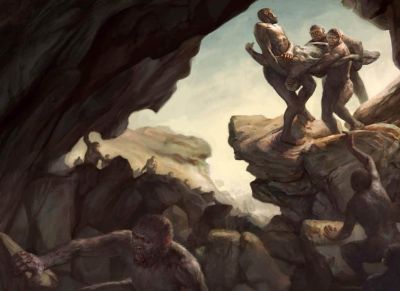 All clues pointed to a
possibility of a burial chamber.
Could such small brained individuals been sophisticated enough to bury
their dead?
The fact that Homo naledi was not embedded in rock meant that dating
the fossils became extremely difficult. Homo naledi was originally
thought to be approximately 2 millions years old, but research
published
in 2017 dates the oldest
specimen of the species to be 335, 000 years old. The age of Homo
naledi suggests that the species may have lived alongside Homo sapiens!
All clues pointed to a
possibility of a burial chamber.
Could such small brained individuals been sophisticated enough to bury
their dead?
The fact that Homo naledi was not embedded in rock meant that dating
the fossils became extremely difficult. Homo naledi was originally
thought to be approximately 2 millions years old, but research
published
in 2017 dates the oldest
specimen of the species to be 335, 000 years old. The age of Homo
naledi suggests that the species may have lived alongside Homo sapiens!
Many elements came together to make the study of Homo naledi possible, viz. the spirit of adventure, the size of the cavers, the link the cavers had with Berger’s geologist contact, the overwhelming response to Berger’s advert, the skilled assistants that Berger had at his disposal to process the fossils, the sheer volume of specimens and finally the availability of funding by the National Geographic. The date of the announcement of the species, 10 September 2015 will for ever be a special one for South Africa.
| Officila (left) and personalized
(right) FDC |
|
 |

|
| Used
covers
|
|
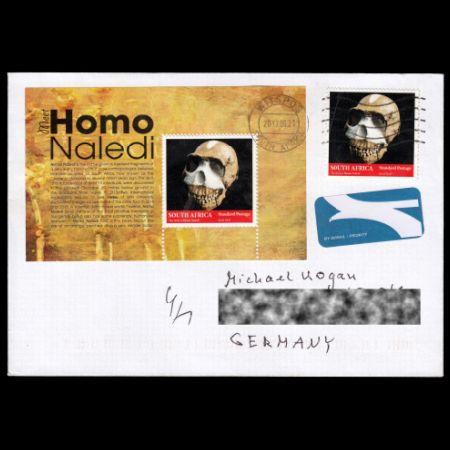 |
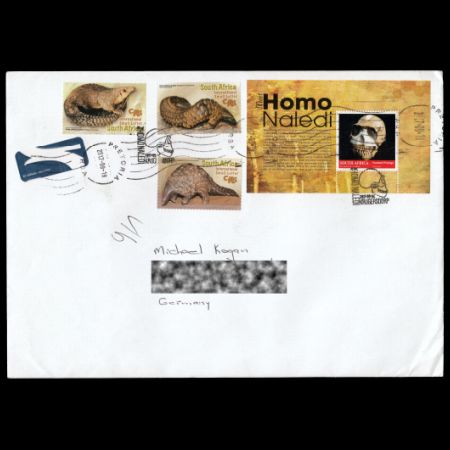 |
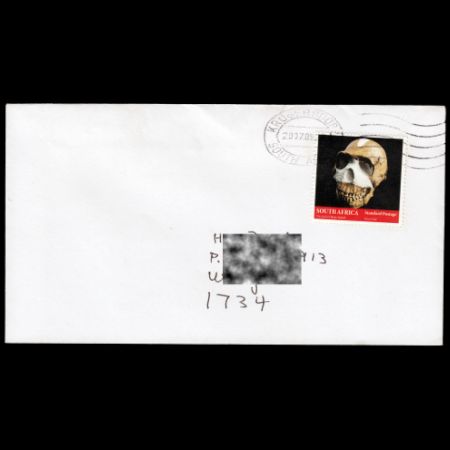 | 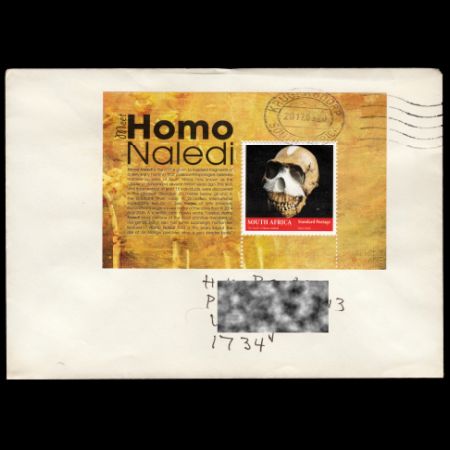 |
Acknowledge: Many thanks to Hans Ulrich Bantz for his help to find an information about this stamps
References: Setempe magazine of the South African Post Office, inside text of FDC , National Geographic, Wits University, Scientific American,
 |
|
Last update 20.01.2018
Any feedback, comments or even complaints are welcome: admin@paleophilatelie.eu (you can email me on ENglish, DEutsch, or RUssian)